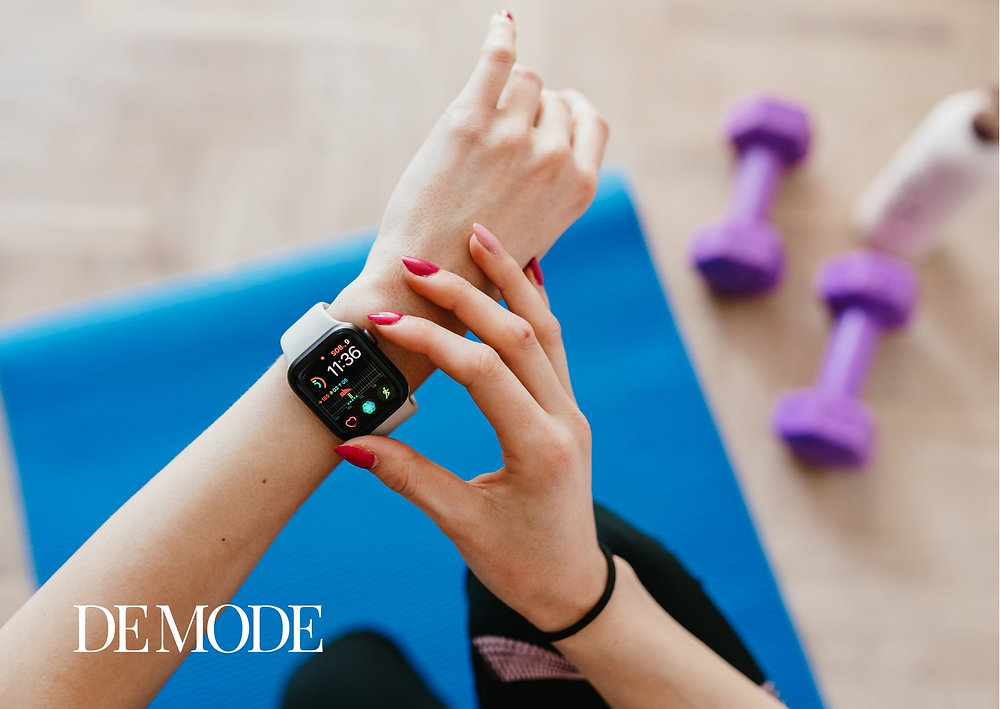The Rise of Wearable Tech in Everyday Digilife delves into the fascinating realm of wearable technology, shedding light on its growing importance in our modern world. From its humble beginnings to its current prevalence, this exploration promises to unveil the wonders of wearable tech in our daily lives.
As we journey through the various facets of this tech trend, we will uncover its influence on health, productivity, and convenience, painting a vivid picture of a future where wearable devices seamlessly integrate into our routines.
Introduction to Wearable Tech
Wearable technology, also known as wearables, refers to electronic devices that can be worn on the body like accessories or clothing. These devices are designed to enhance daily activities, monitor health and fitness, provide information, and even offer entertainment on-the-go.
The significance of wearable tech in modern society lies in its ability to seamlessly integrate technology into our lives, making tasks more convenient and accessible.Over the years, wearable technology has evolved from basic fitness trackers to sophisticated smartwatches, smart glasses, and even smart clothing.
These devices are equipped with sensors, software, and connectivity features to gather data, track activities, and provide real-time feedback to users. The evolution of wearables has transformed the way we interact with technology, blurring the lines between the digital and physical worlds.Popular examples of wearable devices in the market include smartwatches like the Apple Watch, fitness trackers like Fitbit, augmented reality glasses like Google Glass, and smart clothing with built-in biometric sensors.
These devices offer a wide range of functionalities, from tracking workouts and monitoring health metrics to receiving notifications, making payments, and accessing digital assistants on the go.
Impact of Wearable Tech on Daily Life
Wearable technology has significantly transformed everyday activities by providing users with convenient access to information and tools right at their fingertips. Whether it's tracking fitness goals, monitoring health metrics, or staying connected on the go, wearable devices have become an integral part of modern living.
Benefits of Using Wearable Devices in Health and Fitness
- Wearable fitness trackers like Fitbit or Apple Watch allow users to monitor their physical activity, heart rate, and sleep patterns, empowering them to make healthier lifestyle choices.
- Health-focused wearables can provide real-time data on vital signs, medication reminders, and even detect potential health issues early on, leading to better overall well-being.
- By gamifying exercise routines and setting achievable goals, wearable tech motivates users to stay active and maintain a consistent fitness regimen.
Enhancing Productivity and Convenience with Wearable Tech
- Smartwatches and smart glasses enable users to access notifications, emails, calendar reminders, and calls without having to constantly check their phones, improving efficiency and reducing distractions.
- Wearable devices equipped with GPS and navigation features make it easier for users to find their way in unfamiliar locations, whether walking, driving, or biking.
- In professional settings, wearables like smart badges or smart clothing can streamline operations, enhance communication, and improve safety protocols for workers in various industries.
Types of Wearable Devices
Wearable technology has evolved to encompass a wide range of devices designed to enhance various aspects of our daily lives. Let's explore the different categories of wearable devices available and delve into the functionalities and purposes of smartwatches, fitness trackers, and smart clothing.
Smartwatches
Smartwatches are versatile devices that can perform a variety of functions beyond telling time. They typically offer features such as notifications for calls, messages, social media, and emails, as well as health and fitness tracking capabilities. With the ability to sync with smartphones, smartwatches act as an extension of our digital lives, allowing easy access to information and quick responses on the go.
Fitness Trackers
Fitness trackers are specifically designed to monitor and track physical activity, such as steps taken, distance traveled, calories burned, and even sleep patterns. These devices provide valuable insights into one's daily exercise routine and overall health, motivating users to stay active and achieve their fitness goals.
Some fitness trackers also offer additional features like heart rate monitoring and GPS tracking for more detailed analysis.
Smart Clothing
Smart clothing integrates technology directly into apparel, offering innovative functionalities such as biometric monitoring, temperature regulation, and even posture correction. From smart socks that analyze running performance to smart shirts that track breathing patterns, these garments aim to enhance comfort, performance, and health for the wearer.
With advancements in textile technology, smart clothing is becoming increasingly popular in the realms of sports, healthcare, and fashion.
Technological Advancements in Wearable Tech
Wearable technology has seen significant advancements in recent years, with innovations that are shaping the future of how we interact with devices on a daily basis. The integration of artificial intelligence (AI) and Internet of Things (IoT) has played a crucial role in enhancing the capabilities of wearable devices, making them smarter and more intuitive than ever before.
AI and IoT Integration in Wearable Devices
AI algorithms are being used to analyze data collected by wearable devices in real-time, providing users with personalized insights and recommendations based on their behavior and preferences
Use of Sensors and Biometric Data
Wearable devices now come equipped with a wide range of sensors that can track various aspects of our health and fitness, such as heart rate, sleep patterns, and activity levels. This biometric data is invaluable in helping users make informed decisions about their lifestyle and well-being, ultimately leading to improved health outcomes.
Advancements in Display Technology
The development of flexible and high-resolution display screens has revolutionized the way information is presented on wearable devices. From smartwatches with vibrant touchscreens to augmented reality glasses that overlay digital information onto the real world, these advancements have made wearable tech more immersive and user-friendly than ever.
Enhanced Battery Life and Charging Solutions
One of the key challenges in wearable technology has been improving battery life to ensure that devices can last throughout the day without frequent recharging. Recent advancements in battery technology, as well as innovative charging solutions such as wireless charging and fast charging, have addressed this issue and made wearable devices more convenient to use.
Privacy and Security Concerns

As wearable technology becomes more integrated into daily life, there are growing concerns about the privacy and security risks associated with these devices. From fitness trackers to smartwatches, the data collected by wearable devices can be vulnerable to unauthorized access and misuse.
Potential Privacy Risks
Wearable devices constantly collect sensitive personal data, such as location, health metrics, and daily activities. This data can be a goldmine for hackers looking to steal identities or track individuals without their consent.
Data Protection Measures
- Manufacturers should implement robust encryption protocols to safeguard the data collected by wearable devices.
- Users should regularly update the firmware and software of their devices to patch security vulnerabilities.
- Utilizing strong passwords and enabling two-factor authentication can add an extra layer of security to wearable tech.
Securing Personal Information
When using wearable technology, it's essential to take proactive steps to protect your personal information:
- Avoid sharing sensitive data with third-party apps or services that may not have stringent security measures in place.
- Review privacy settings on wearable devices to control what information is being shared and with whom.
- Regularly monitor your device's permissions and revoke access to any apps or services that no longer need your data.
Closure
In conclusion, The Rise of Wearable Tech in Everyday Digilife encapsulates a narrative brimming with innovation and potential. As we embrace the advancements in this field, we are poised to witness a digital revolution that blurs the lines between technology and lifestyle, ushering in a new era of connectivity and seamless integration.
FAQ Compilation
What are the main categories of wearable devices?
Wearable devices are typically categorized as smartwatches, fitness trackers, smart clothing, and augmented reality glasses.
How does wearable tech impact everyday activities?
Wearable tech enhances everyday activities by providing real-time data, promoting health and fitness, and improving convenience through seamless integration.
What are the privacy concerns associated with wearable tech?
Privacy concerns include data security, potential misuse of personal information, and unauthorized access to sensitive data collected by wearable devices.
How are AI and IoT shaping the future of wearable tech?
AI and IoT integration are revolutionizing wearable tech by enabling smarter functionalities, predictive capabilities, and enhanced user experiences.












